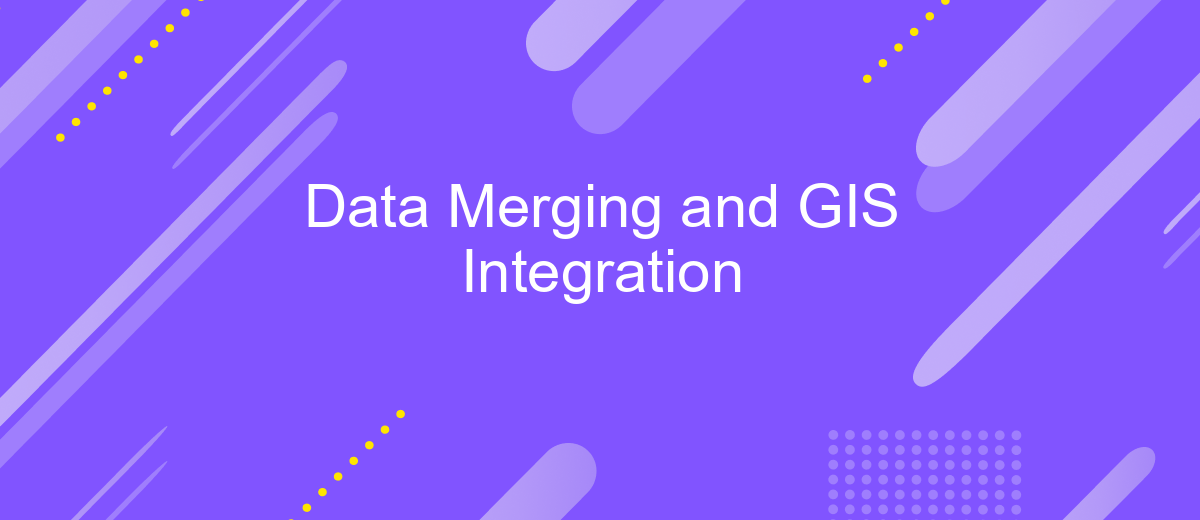Data Merging and GIS Integration
Data merging and GIS integration are pivotal in enhancing spatial data analysis and decision-making processes. By combining diverse datasets and leveraging Geographic Information Systems (GIS), organizations can gain comprehensive insights, improve accuracy, and streamline workflows. This article delves into the methodologies, benefits, and practical applications of integrating data merging techniques with GIS technology to optimize spatial data utilization.
Introduction
Data merging and GIS integration are critical processes in modern data management, enabling organizations to combine disparate data sources and geographic information for comprehensive analysis. These integrations facilitate better decision-making, improve operational efficiency, and provide deeper insights into spatial data relationships.
- Combining multiple data sources for enhanced analysis
- Improving data accuracy and consistency
- Enabling spatial data visualization and mapping
- Facilitating real-time data updates and integration
One effective tool for achieving seamless data merging and GIS integration is ApiX-Drive. This service allows users to automate data transfers between various platforms, ensuring that all data is up-to-date and accurately reflected across systems. By leveraging such tools, organizations can streamline their data workflows, reduce manual errors, and enhance their overall data strategy.
Data Merging Techniques

Data merging techniques are essential for integrating diverse datasets into a unified format, enabling more comprehensive analysis and decision-making. One commonly used method is the join operation, which combines records from two or more tables based on a related column, such as an ID or key. Another technique is concatenation, where datasets with the same structure are appended together, increasing the volume of data for analysis. Additionally, data transformation tools can be employed to standardize formats and units, ensuring consistency across merged datasets.
For seamless integration and automation of data merging processes, services like ApiX-Drive offer robust solutions. ApiX-Drive facilitates the connection of various data sources and automates the transfer and transformation of data between them. This service supports a wide range of applications and platforms, making it easier to synchronize datasets without manual intervention. By leveraging such tools, organizations can streamline their data workflows, reduce errors, and enhance the overall efficiency of their data integration efforts.
Geographic Information Systems (GIS) and Data Integration

Geographic Information Systems (GIS) play a crucial role in the integration of diverse data sets, enabling spatial analysis and visualization. By combining geographic data with other types of data, organizations can make more informed decisions, optimize resource allocation, and improve operational efficiency.
- Data Collection: Gathering spatial and non-spatial data from various sources.
- Data Integration: Merging data sets using GIS tools and platforms.
- Data Analysis: Conducting spatial analysis to uncover patterns and relationships.
- Data Visualization: Creating maps and visual representations for better understanding.
- Data Sharing: Distributing integrated data through various channels.
One effective service for facilitating data integration is ApiX-Drive. This platform allows users to automate the process of merging data from different sources, including GIS data, without requiring extensive technical expertise. By leveraging such tools, businesses can streamline their data workflows, ensuring that all relevant information is seamlessly integrated and readily available for analysis and decision-making.
Applications of Data Merging and GIS Integration

Data merging and GIS integration have a wide range of applications across various industries. By combining different data sources and integrating them with Geographic Information Systems (GIS), organizations can gain deeper insights and improve decision-making processes.
For instance, in urban planning, merging demographic data with geographic information helps planners design better infrastructure and public services. In agriculture, integrating soil data with weather patterns can optimize crop management and yield predictions. Environmental monitoring also benefits from this integration by allowing real-time tracking of natural resources and pollution levels.
- Urban Planning: Enhanced infrastructure and service design
- Agriculture: Optimized crop management and yield predictions
- Environmental Monitoring: Real-time tracking of natural resources
- Transportation: Improved route planning and traffic management
- Public Health: Better disease tracking and resource allocation
Services like ApiX-Drive facilitate the integration of various data sources, making it easier for organizations to implement data merging and GIS solutions. By automating data flows and ensuring seamless integration, these services enhance the efficiency and accuracy of data-driven projects.
- Automate the work of an online store or landing
- Empower through integration
- Don't spend money on programmers and integrators
- Save time by automating routine tasks
Conclusion
The integration of data merging techniques with Geographic Information Systems (GIS) has proven to be a significant advancement in spatial data analysis. By combining diverse datasets, we can uncover patterns and insights that were previously inaccessible. This synergy not only enhances data accuracy but also enables more informed decision-making across various sectors such as urban planning, environmental monitoring, and resource management.
Moreover, the use of integration services like ApiX-Drive simplifies the process of merging data from multiple sources. ApiX-Drive’s user-friendly interface and automation capabilities streamline the workflow, allowing for seamless data synchronization and real-time updates. This ensures that GIS applications are continuously fed with the most current and relevant data, thereby improving their reliability and effectiveness. In conclusion, the fusion of data merging with GIS, supported by robust integration tools, represents a powerful approach to leveraging spatial data for comprehensive analysis and strategic planning.
FAQ
What is data merging in the context of GIS?
Why is data merging important for GIS projects?
What are common challenges faced during data merging in GIS?
How can automation tools help in data merging and GIS integration?
What are the best practices for ensuring data quality during GIS integration?
Apix-Drive will help optimize business processes, save you from a lot of routine tasks and unnecessary costs for automation, attracting additional specialists. Try setting up a free test connection with ApiX-Drive and see for yourself. Now you have to think about where to invest the freed time and money!


